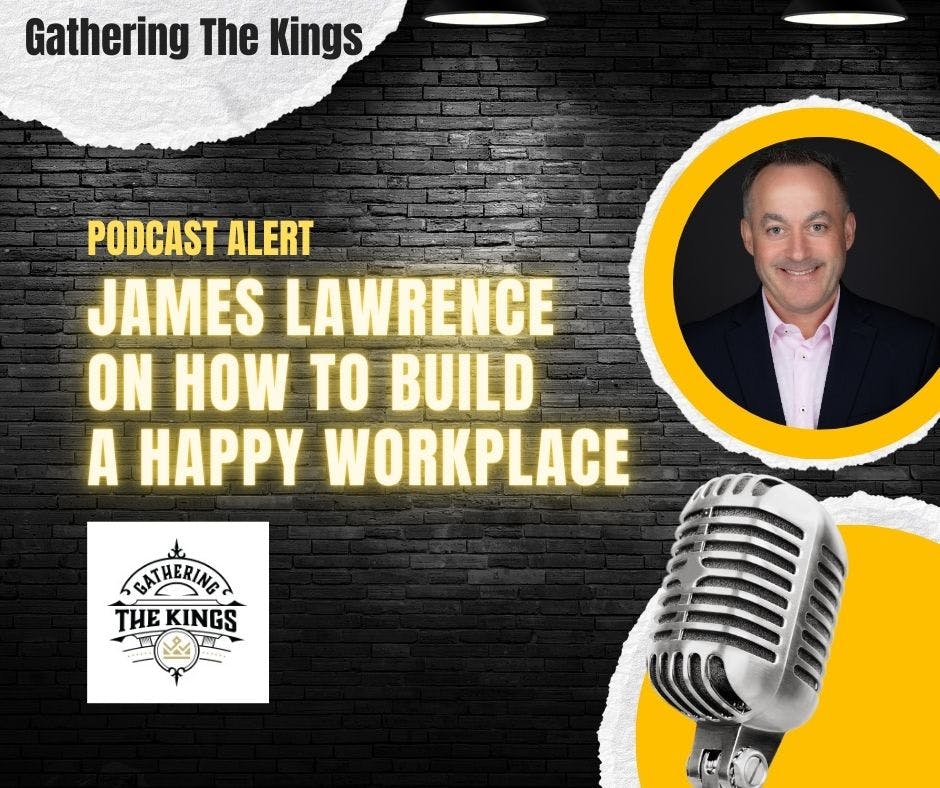In a world where business moves at the speed of light and innovation is the currency of success, a pivotal element often gets overlooked in the scramble for profitability and growth: the human factor. Picture this: you step into the bustling ecosystem of a business, where every conversation, from impromptu brainstorming sessions to deep-dive performance reviews, has the potential to spark growth and ignite innovation. In this space, leadership is not just about chasing financial goals; it's about recognizing and harnessing the incredible power of human capital—the collective talents, insights, and energies of the people who make up the company.
For many business leaders, finding the ideal equilibrium between fostering a people-first culture and meeting strategic business goals can feel like navigating a complex maze. The challenges are significant, and the stakes are high. Yet, the growing body of evidence clarifies that prioritizing employee engagement and leadership excellence isn't just a bonus—it's an essential component of business success.

Research paints a clear picture: companies with highly engaged employees don't just perform well; they outperform their competitors significantly. Gallup's deep dives into the data reveal that teams buzzing with engagement see a 21% boost in profitability. And that's just the tip of the iceberg. According to Deloitte's findings, organizations leading the charge in leadership development aren't just ticking boxes; they're 1.5 times more likely to be celebrated as pinnacle performers in their industry.
People-centered leadership focuses on valuing and developing each team member as an individual, ensuring their voices are heard and their needs are met. Imagine a work environment where leaders actively cultivate a culture of trust, empathy, and empowerment. In such a setting, decision-making is inclusive, feedback flows freely, and employees feel genuinely valued for their unique contributions. This approach not only boosts morale but also enhances creativity and innovation by tapping into the diverse perspectives within the team. By prioritizing the well-being and professional growth of their employees, leaders can create a more engaged workforce. This strategy doesn't merely add to the quality of the workplace; it directly contributes to sustainable business growth and resilience.
In this article, we're inviting you to embrace a leadership style that goes beyond just talking about being people-centric. It's about making this approach a fundamental part of your company's core operations.
A New Leadership Blueprint
The time is ripe for a leadership revolution—a shift towards a paradigm where people are not just seen as cogs in the machine but as the heart and soul of the business. It's about building a workplace where collaboration, innovation, and a shared sense of purpose thrive.

Dive in, and let's explore how to make leadership work for everyone, unlocking the full potential of your team and steering the business toward a brighter, more prosperous future.
Balancing Act: People Before Profits Without Losing Sight
Creating a workplace where every employee feels valued and heard might sound like a lofty goal, especially when the pressure's on to hit those financial targets. But it's not just a nice-to-have; it's a must-have for driving growth. Deloitte's 2019 Global Human Capital Trends report highlights this, revealing that companies buzzing with engaged employees rake in 2.5 times more revenue than their less-engaged competitors. Daniel Pink, the mastermind behind "Drive," puts it simply: the real magic happens when financial worries are off the table, freeing everyone to focus on what they do best.
The Power of Open Doors: Fostering Communication and Trust
Imagine a workplace where ideas flow freely, and mistakes are seen as stepping stones, not setbacks. This isn't a fantasy; it's the foundation of innovation. Google's Project Aristotle study uncovered a gem of wisdom: psychological safety is the key to a top-performing team. In this space, folks don't fear being themselves. Simon Sinek, a sage in the world of leadership, tells us that trust is what transforms a group of people into a team. Building this environment of trust and openness is where true collaboration and breakthroughs begin.

Leadership That Inspires: Keeping Talent Excited and Engaged
The link between great leadership and happy employees is undeniable. Gallup's research spells it out: managers wield the power to make or break employee engagement, with their actions accounting for a whopping 70% of the variance in engagement levels. This is where investing in leadership development pays off, not just in keeping talent around but in boosting the company's overall performance. Brené Brown, a beacon of wisdom on leadership, champions the cause of vulnerability, urging leaders to be open about the challenges, thus paving the way for a culture where honesty and courage thrive.
Innovation and Growth: The Human-Centric Formula
Putting people first isn't just the right thing to do; it's a strategic move that propels innovation and profit. McKinsey & Company's findings are a testament to this, showing that diversity isn't just a buzzword; it's a business advantage, with more diverse companies outperforming their peers financially. Satya Nadella of Microsoft encapsulates this perfectly, stating that empathy isn't just a soft skill; it's at the heart of major innovations, driving forward those who genuinely care.
The path to navigating the complexities of modern leadership isn't through charts and spreadsheets alone but through the genuine commitment to nurturing a workplace where every individual can thrive. By embracing these principles, we as leaders can unlock the full potential of our teams, fostering an environment where innovation, trust, and profitability flourish hand in hand. But how can we accomplish this?

Empowering Your Team: Practical Steps for a People-Centered Leadership
The challenge is clear: How can we, as CEOs and senior executives, foster a culture that cherishes every team member's well-being and contributions while steering the company toward its strategic goals? The solutions lie in a series of practical steps that may seem simple and require dedication and a genuine commitment to change.
1. Embrace Transparent Goal Setting and Share Success
- Strategy: Implement a system where business goals and progress are transparently shared with all employees. Celebrate achievements as a collective win, making every team member feel valued and part of the bigger picture.
- Why It Works: According to research by Deloitte, transparent communication of business goals and milestones significantly enhances employee engagement. It creates a sense of belonging and purpose, which is crucial for a people-centered workplace.
- Action Step: Try holding monthly all-hands meetings to highlight achievements, discuss challenges, and share goals. Use these gatherings to recognize individual and team contributions, linking them to the broader company objectives.
2. Foster Psychological Safety Through Leadership Training
- Strategy: Invest in leadership development programs focused on emotional intelligence, empathy, and creating psychological safety within teams.
- Why It Works: Google's Project Aristotle underscores the importance of psychological safety for high-performing teams. Leaders who understand and practice emotional intelligence can create environments where employees feel safe expressing ideas, voicing concerns, and taking risks.
- Action Step: Roll out leadership workshops emphasizing active listening, empathy, and constructive feedback. Encourage leaders to hold regular one-on-one check-ins with their team members to build trust and open lines of communication.

3. Prioritize Personal Development and Growth Opportunities
- Strategy: Develop personalized growth plans for each employee, including opportunities for skills development, mentorship, and career progression.
- Why It Works: According to LinkedIn's Workplace Learning Report, 94% of employees would stay at a company longer if it invested in their career development. This investment signals to employees that the organization values their growth and sees them as integral to its future.
- Action Step: Collaborate with employees to identify their career aspirations and learning needs. To support their professional development, offer access to online courses, industry conferences, and internal mentorship programs.
4. Use Smart Tech to Keep Everyone Connected and Working Together
- Strategy: Bring in advanced tools like Happy to make communication smoother and teamwork stronger, no matter if your team is working from the office, from home, or a bit of both.
- Why It Works: Technology can bridge geographical divides, foster a sense of community, and facilitate easier sharing of ideas. Microsoft CEO Satya Nadella noted that embracing technology can enhance productivity and innovation while keeping teams connected. For instance, Happy Workstyles unlocks powerful insights on communicating and collaborating with every employee more effectively - driving meaningful work with less conflict. Meanwhile, Happy Coach turns those insights into action, offering confidential & personalized coaching powered by behavioral science and generative AI, reviewed and curated by experienced leadership coaches. Coach uses smart algorithms to automatically deliver these insights to users on the people they frequently interact with at work.
- Action Step: Introduce collaborative platforms like Slack or Microsoft Teams to keep conversations flowing. Integrate project management tools such as Asana or Trello to keep everyone aligned on projects and goals. Then, take your team's connectivity and collaboration to the next level by incorporating Happy into your tech stack. Happy not only enhances team communication and organization culture, but it also integrates directly within the tools your team uses daily, like Slack and Microsoft Teams.
Leading with People in Mind: The Key to Sustained Business Success
Building effective teams is more crucial than ever to organizational performance in the new era of work. Happy enhances organizational culture, communication, and manager effectiveness at scale – making your people your competitive advantage. It's designed to help businesses like yours make employee happiness a central pillar of success, offering the insights and advice you need to make your team happier and more productive.

By embracing these technologies, business leaders can cultivate a culture that values and actively invests in its people. This strategy doesn't just support achieving business objectives; it builds a foundation for a more resilient, innovative, and profitable business. Remember, the heart of every successful company is its people. By prioritizing their well-being and development with the help of innovative solutions like Happy, you're not just doing good; you're paving the way for unparalleled business success.
Want to learn more? Book a free demo today. Start exploring how Happy can help transform your company into a happier, more successful place today.
Keep Reading

- Announcements
- 5 mins to read
Enhance Team Potential with Happy's New Coaching Circles
Discover how Happy's Coaching Circle can help build better communication and teamwork for more effective collaboration.

- Podcast
- 12 mins to read
The Blueprint for Workplace Happiness: James Lawrence on Gathering the Kings Podcast
Unlock the secrets to a thriving workplace with Happy's CEO's top insights on leadership, culture, and team dynamics.

- Employee Engagement
- 10 mins to read
Turning Conflict into Opportunity: Navigating Workplace Dynamics
Discover strategies to convert workplace conflicts into opportunities for innovation, team cohesion, and personal growth.


